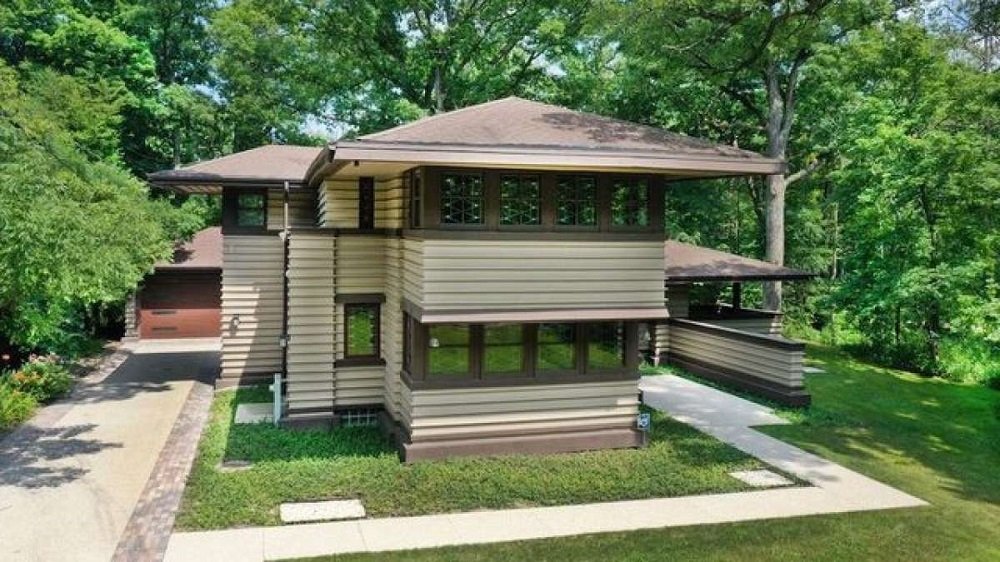#11981. Organic Prairie Style Façade: Horizontal Composition and Unity with Nature
This image showcases an excellent example of Prairie Style architecture, developed by Frank Lloyd Wright in the early 20th century. The building demonstrates all the characteristic features of this movement: horizontal lines emphasizing connection with the landscape, wide roof overhangs creating shadows and visual protection, and ribbon windows arranged in horizontal bands.
The façade masterfully employs horizontal composition: the horizontal siding emphasizes the building's linear extension, while dark wooden window framing elements create a rhythmic pattern and contrast with the lighter walls. Particularly notable are the projecting eaves of the low hipped roof, which give the building a sense of shelter and protection.
The design shows careful attention to detail: clear division of levels is emphasized by horizontal bands, and the second-floor windows form an almost continuous ribbon, visually expanding the space. The building harmoniously integrates with the surrounding nature – it doesn't dominate the landscape but rather becomes an organic part of it, which was one of Wright's core principles.
To apply similar techniques in modern façade design, consider using horizontal lines in finishing, extended roof overhangs, rhythmic window placement, and contrasting material combinations. It's also important to focus on integrating the house with its surroundings by using terraces and transitional spaces between interior and exterior.
